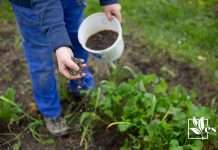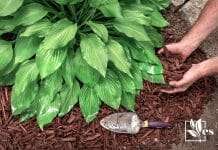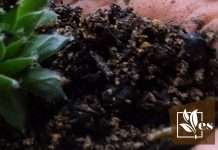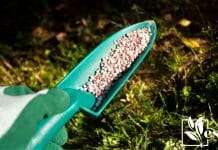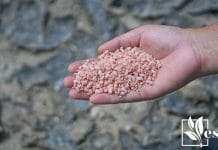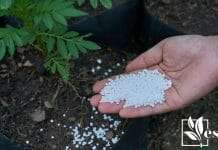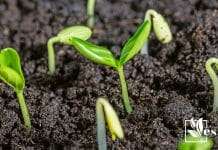In my gardening experience, wood ash can be a beneficial addition to the soil around roses. Understanding that it’s a source of natural fertilizer, the ash contains essential nutrients that support rose health, particularly potassium, which is vital for flower production and overall plant robustness. However, it’s not just about the nutrients; wood ash can also serve as a soil amendment, potentially raising the pH of soil that is too acidic for roses, which generally thrive in slightly acidic conditions with a pH between 6.0 and 6.5.

As an organic matter, wood ash should be used judiciously. Over-application can lead to an imbalance in soil pH and nutrient levels, possibly doing more harm than good, especially to young roses. When I add wood ash to my garden, I do so sparingly, ensuring not to disrupt the delicate soil ecosystem that roses love. It’s important to remember that roses are not just any plant; they have specific soil and fertilization requirements to flourish.
In moderate quantities, wood ash can be good for roses, enhancing soil fertility and adjusting pH levels favorably.
JUMP TO TOPIC
Unlocking the Potential of Wood Ash in Your Garden
As a seasoned gardener, I’ve learned that wood ash can be incredibly beneficial when used correctly in the garden. It’s all about understanding its properties and how they can improve soil health and plant vitality.
Understanding Soil pH and Its Impact on Plant Health
💥 Soil pH Basics
Soil pH is a measure of the soil’s acidity or alkalinity, and it can significantly impact plant health. Most garden plants thrive in a soil pH range between 6.0 and 7.0, as this is the range in which nutrients are most available to plants. Acidic soil can be detrimental to plants, causing nutrient deficiencies, while alkaline soil can lead to toxicities.
Wood Ash as a Source of Essential Nutrients for Plants
Nutrients in Wood Ash.
- Wood ash contains potassium, which supports plant growth and disease resistance.
- It also provides calcium, essential for cell development in plants.
Wood ash is rich in key nutrients like potassium and calcium that are vital for healthy plant growth. Potassium is particularly crucial as it aids in flower and fruit production, making it especially beneficial for blooming plants like roses. Calcium, on the other hand, contributes to strong cellular development and overall plant stability.
Maximizing the Benefits of Wood Ash for Various Plant Types
Correct application of wood ash can enhance soil fertility and benefit various plants, provided their specific needs are kept in mind.
To get the most out of wood ash for your plants, it’s essential to use it judiciously. Since wood ash raises the pH level, it is more suitable for acidic soils that need a pH boost. However, it should be used sparingly in alkaline soils to avoid creating an inhospitable environment for plants that prefer acidic conditions. Always test your soil’s pH before applying wood ash to ensure it’s the right fit for your garden’s needs. For roses and other plants that enjoy slightly acidic to neutral soil conditions, wood ash can be used to maintain the ideal pH range while providing essential nutrients for growth.
Be cautious not to over-apply wood ash as it can lead to excessive alkalinity and harm plants.
Optimizing Fertilization Practices for Garden Vitality
As a gardener, I know that achieving a flourishing garden requires a balance of nutrients, often provided by fertilizers. Let’s explore how wood ash can fit into this regime, especially for roses.
Comparing Wood Ash to Commercial Fertilizers
Wood ash is a natural byproduct of burned wood that I sometimes use as a fertilizer due to its rich mineral content, particularly potassium, which is crucial for plant health. Unlike commercial fertilizers, wood ash doesn’t usually contain nitrogen or phosphorus, but it offers other essential nutrients like calcium and magnesium. Before using, it’s essential to perform a soil test, as wood ash also raises soil pH, which can be beneficial if soil is overly acidic.
- Wood Ash: Adds potassium, calcium, magnesium; raises pH.
- Commercial Fertilizers: Often complete with N-P-K (Nitrogen-Phosphorus-Potassium); may acidify soil.
Incorporating Compost and Wood Ash for Soil Enrichment
In my compost pile, combining wood ash with organic matter enhances the nutrient profile, which provides a richer soil amendment for my roses. I add both materials sparingly to maintain balance and prevent excessive alkalinity. Integrated correctly, this mixture can stimulate robust root and bloom development in roses.
Best Times for Fertilizer Application During Growing Season
The growing season’s timing influences my fertilization routine. In spring, after the last frost and when roses are beginning to leaf out, I incorporate a round of balanced fertilizer to kick-start growth. I’ll sprinkle wood ash lightly around the base of the rose bushes to give them an extra boost of potassium. I take care not to apply wood ash during rainy periods, as nutrients can leach away quickly. Regular soil testing ensures I’m enriching the soil just as my roses need it.
- Early Spring: Apply balanced fertilizer after last frost; introduce wood ash as soil warms.
- Growing Season: Monitor and adjust based on soil testing results; avoid rainy periods for wood ash.
Addressing Common Gardening Challenges with Wood Ash
Wood ash can be a powerful ally in the garden, particularly for nurturing roses. In my experience, it not only enriches the soil but also addresses a range of common gardening challenges effectively.
Safeguarding Plants from Pests and Diseases with Wood Ash
🐌 Pests: Sprinkling wood ash around rose bushes helps deter soft-bodied pests like slugs and snails, which are repelled by its powdery texture and alkaline nature. However, it should be used judiciously to avoid harming beneficial insects.
🍄 Diseases: Wood ash contains trace minerals that can foster stronger plant growth, potentially enhancing their resistance to certain diseases. While not a cure-all, it contributes to overall plant health.
Correcting Nutrient Imbalances and Heavy Metal Presence in Soil
💚 Nutrient Imbalances: Roses thrive with a steady supply of potassium, which wood ash has in abundance. By amending the soil, I boost potassium levels, supporting the blooming and root strength of my roses.
🥀 Heavy Metals: A common misconception is that wood ash can leach heavy metals into the soil. In truth, the heavy metal content in wood ash is often minimal, and I ensure that the ash is from untreated, natural wood to avoid contamination.
Avoiding the Risks of Overuse: Wood Ash Application Best Practices
I’m careful to apply wood ash in moderation to avoid excessively alkaline soil conditions, which can hinder the absorption of essential nutrients by roses. Light, infrequent applications promote beneficial effects without the risk of soil imbalance.
🌸 Best Practices:
I’ve found the optimal routine for applying wood ash to my garden involves doing so sparingly and only in the fall or when plants are dormant. This timing allows the ash to integrate into the soil without harming active root growth or microbial life. Moreover, I always perform a soil pH test beforehand to ensure that my soil’s acidity levels are conducive to the addition of wood ash.



